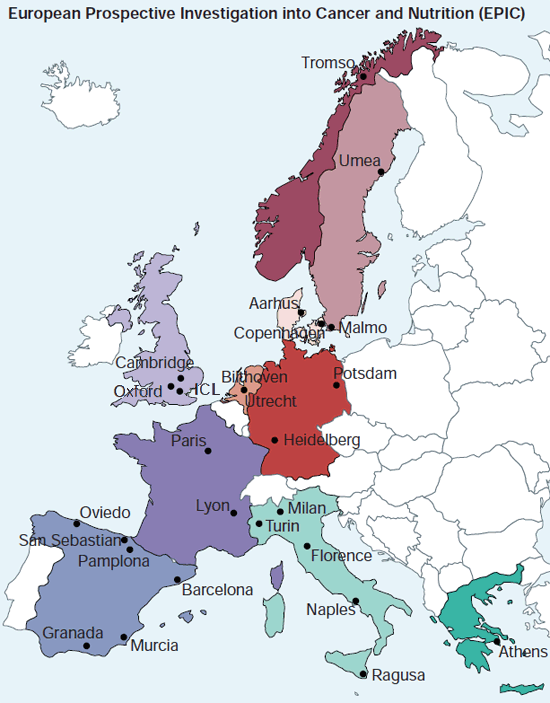Abstract
The association of reproductive factors with hormone receptor (HR)-negative breast tumors remains uncertain.
Within the EPIC cohort, Cox proportional hazards models were used to describe the relationships of reproductive factors (menarcheal age, time between menarche and first pregnancy, parity, number of children, age at first and last pregnancies, time since last full-term childbirth, breastfeeding, age at menopause, ever having an abortion and use of oral contraceptives [OC]) with risk of ER-PR- (n = 998) and ER+PR+ (n = 3,567) breast tumors.
A later first full-term childbirth was associated with increased risk of ER+PR+ tumors but not with risk of ER-PR- tumors (≥35 vs. ≤19 years HR: 1.47 [95% CI 1.15-1.88] p(trend) < 0.001 for ER+PR+ tumors; ≥35 vs. ≤19 years HR: 0.93 [95% CI 0.53-1.65] p(trend) = 0.96 for ER-PR- tumors; P(het) = 0.03). The risk associations of menarcheal age, and time period between menarche and first full-term childbirth with ER-PR-tumors were in the similar direction with risk of ER+PR+ tumors (p(het) = 0.50), although weaker in magnitude and statistically only borderline significant. Other parity related factors such as ever a full-term birth, number of births, age- and time since last birth were associated only with ER+PR+ malignancies, however no statistical heterogeneity between breast cancer subtypes was observed. Breastfeeding and OC use were generally not associated with breast cancer subtype risk.
Our study provides possible evidence that age at menarche, and time between menarche and first full-term childbirth may be associated with the etiology of both HR-negative and HR-positive malignancies, although the associations with HR-negative breast cancer were only borderline significant.
